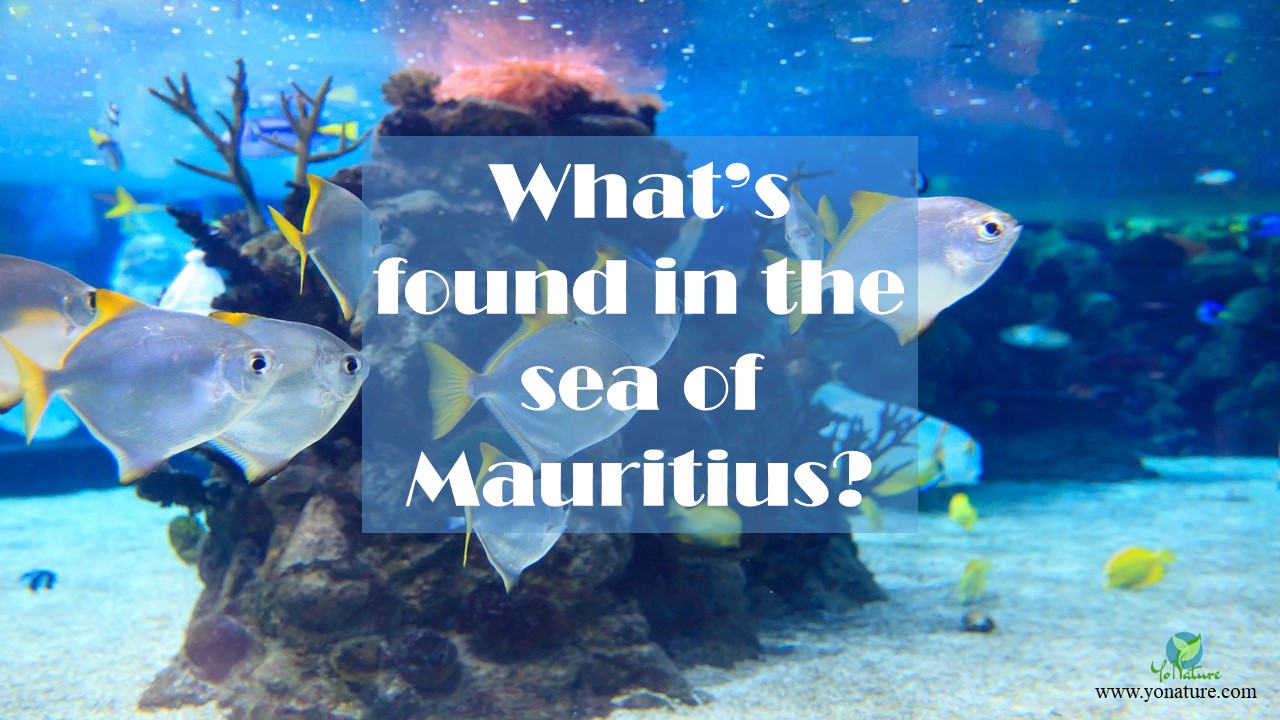Mauritius and its Marine Life

The beautiful marine life that the locals enjoy at perpetuity and tourists crave for, is due to an intricate and well-defined system of coral reef that surrounds the island. The lagoon is calm and homogenous most of the time thanks to the surrounding fringing reef that protects the island. It is only during cyclonic or other oceanic turmoil that the waters can become quite dangerous.
The coastal features of Mauritius
The coastline of Mauritius extends over an area of 322 km. It was formed by the lavas of the old series of eruption (7.5 – 5 million years ago) and then recovered by the recent lava series (> 0.7 million years ago). The features of the coast are very distinct having been moulded by years of climatic factors such as changes in sea levels, cyclones and periods of drought. Nonetheless, human intervention remains the greatest element of change affecting the coast. Land reclamation, sand quarrying, construction, damming of rivers, removal of mangroves and release of pollutants [1] into the sea have altered the marine as well as the terrestrial ecosystems for the worse.
Marine flora
While only 6 species of seagrass have been recorded in the waters of Mauritius [2], there is, however, a very rich seaweed population compared to other places of the Indian Ocean [3]; 268 species of red algae, 108 species of green algae and 59 species of brown algae have been documented so far (435 species in total). Algae is widely used as a source of food and medicine worldwide; with the development of the ocean economy of Mauritius, the future of seaweed cultivation seems bright.
The upper sea surface is occupied mostly by green algae, whereas the deeper parts (below 30 m) are dominated by Sargassum, Turbinaria, and Halimeda. The sandy parts of the ocean are covered with the seagrass Syringodium. Seasonal algal blooms can also be found on the ocean floor such as distinct Padina zone and Sargassum zone [4].
The coral reef
The coral reefs around the island cover an area of 870 km2 [5]. The lagoon is 243 km2 and the EEZ is as huge as 2.3 million km2. The coral reef of Mauritius belongs to the Indo Pacific province, one of the richest marine treasures of the world. It is, in fact, one of the biodiversity hotspots in the Indian Ocean with a high level of endemism due to its geographical remoteness [6].
In the field guide to corals of Mauritius, 160 species of corals have been identified with illustrations [7]. Normally, certain species of corals grow best in different sea bands. For instance, the first 5 m is occupied mostly by branching and massive corals (Acropora, Pocillopora, Stylophora, Millepora); from 5-15 m, there are more massive corals (less branching, more compact forms); the 15-20 m layer is dominated by Goniophora, Favia and Porites; skeletal forms of corals grow in the 25-30 m stripe, while below 30 m, a mixture of different corals such as antipatharians (black coral) and Alcyonacea (soft coral) live in symbiosis with algae, sponges and echinoderms.
Marine fauna
786 species of fish have been identified in Mauritius with 42 species having commercial value. 9 species of shrimps have been recorded with 7 species in coastal waters and 2 species in deeper waters. Only 1 species of oyster exists, Crassostrea edulis, which is also endemic to Mauritius.
Few research works have been carried out on the macrofauna of the island; so far 49 species of amphipods have been documented. Of the marine mammals, 17 species are on record including 2 species of sea turtles. Seals are occasionally sighted while the sea cows that used to be common, have now become rare [8].
Fish species endemic to Mauritius include:
- the Mauritius dragonet Callionymus mascarenus [9],
- the moray eel Gymnothorax sagenodeta [9],
- Smith’s Dottyback Chlidichthys smithae[9], and
- Randall’s dottyback Chlidichthys randali [9].
In addition to this, 36 species of fish have been found in the waters around the smaller islands of Rodrigues and Saint Brandon and in the Saya de Malha bank [10].
References:
- Saddul, P. (2002). Mauritius, A Geomorphological Analysis. Moka, Mauritius: MGI, pp 315-320
- Msangameno, D.J. (2016). Mangroves, Salt marshes and Seagrass beds. United Nations Environment Programme, part 5. [pdf] Available at https://wedocs.unep.org/bitstream/handle/20.500.11822/11349/rsocr_printedition.compressed_Part5.pdf?sequence=6&isAllowed=y [Accessed 22.03.2018]
- Bolton, J.J., Bhagooli, R. and Mattio, L. (2012). The Mauritian Seaweed Flora: Diversity and Potential for Sustainable Utilisation. University of Mauritius Research Journal. Vol 18A. [online] Available at https://www.researchgate.net/publication/236935379_The_Mauritian_Seaweed_Flora_Diversity_and_Potential_for_Sustainable_Utilisation [Accessed 22.03.2018]
- Saddul, P. (2002). Mauritius, A Geomorphological Analysis. Moka, Mauritius: MGI, pp 266, 267
- Spalding, M.D. et al. (2001) World atlas of Coral Reefs. UNEP World Conservation Monitoring Centre. Berkeley, United States of America: University of California Press, pp 424
- Callum, M.R. et al. (2002). Marine Biodiversity Hotspots and Conservation Priorities for Tropical Reefs. Vol 295, pp1280-1284. Available at http://www.columbia.edu/itc/eeeb/baker/N0316/Lecture%205/Roberts%20et%20al%202002.pdf [Accessed 22.03.2018]
- Moothien Pillay, R., Terashima, H., Venkatasami, A. and Uchida, H. (2002). Field Guide to Corals of Mauritius. Albion, Mauritius: Albion Fisheries Research Centre
- Ministry of Environment and Sustainable Development. (2010). Fourth National Report on the Convention on Biological Diversity. [pdf] Available at https://www.cbd.int/doc/world/mu/mu-nr-04-en.pdf [Accessed 23.03.2018]
- Froese, R. and Pauly, D. (2018). FishBase. [online] Available at fishbase.org [Accessed 21.03.2018]
- Living Natural Treasures. Mauritius, Checklist of Endemic Marine Fish Species. [online]. Available at http://lntreasures.com/mauritiusmf.html [Accessed 21.03.2018]

Many mollusc species including bivalves and gastropods found in coastal waters of Mauritius.
Pingback: Sustainable tourism in Mauritius - Yo Nature
Pingback: Coral reef of Mauritius - Yo Nature